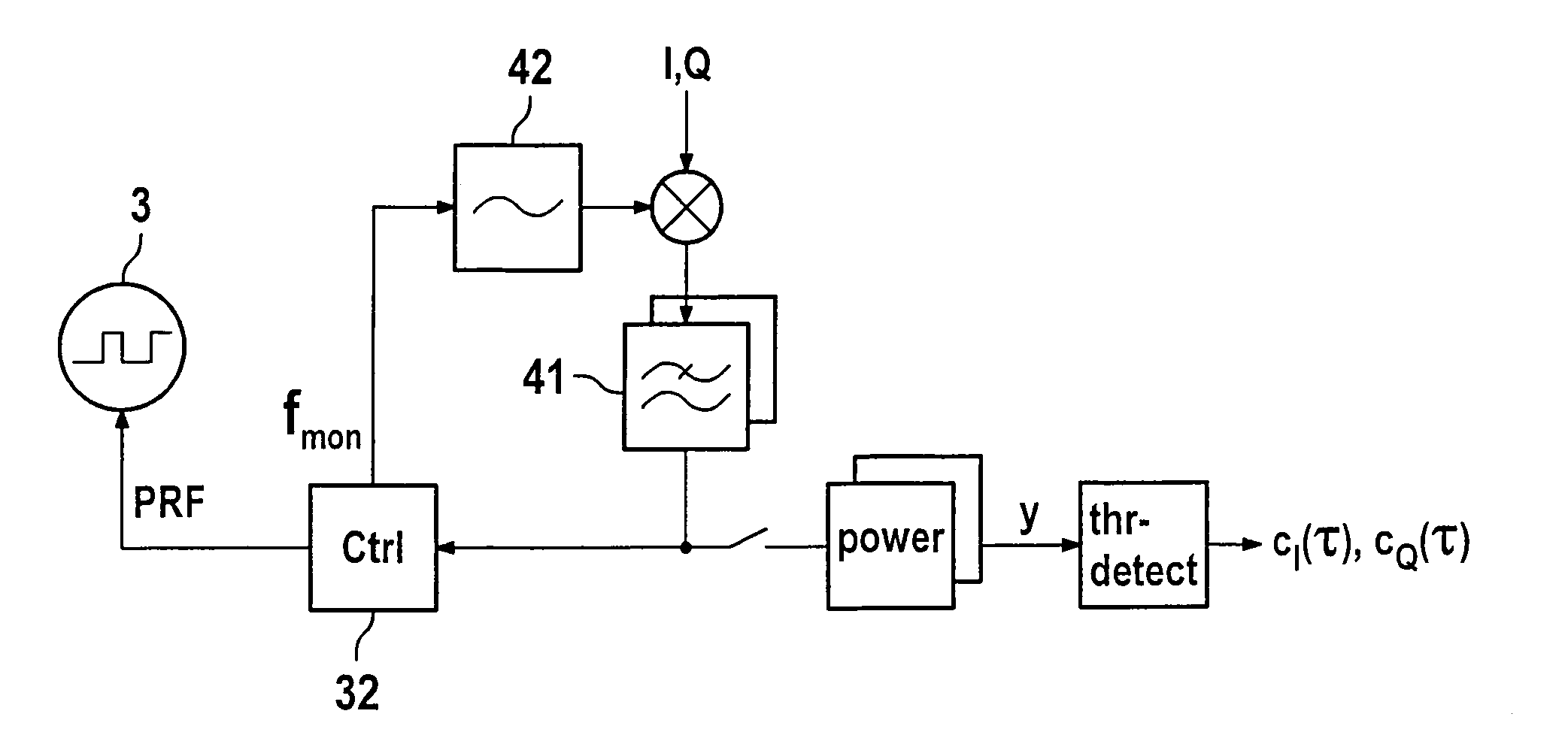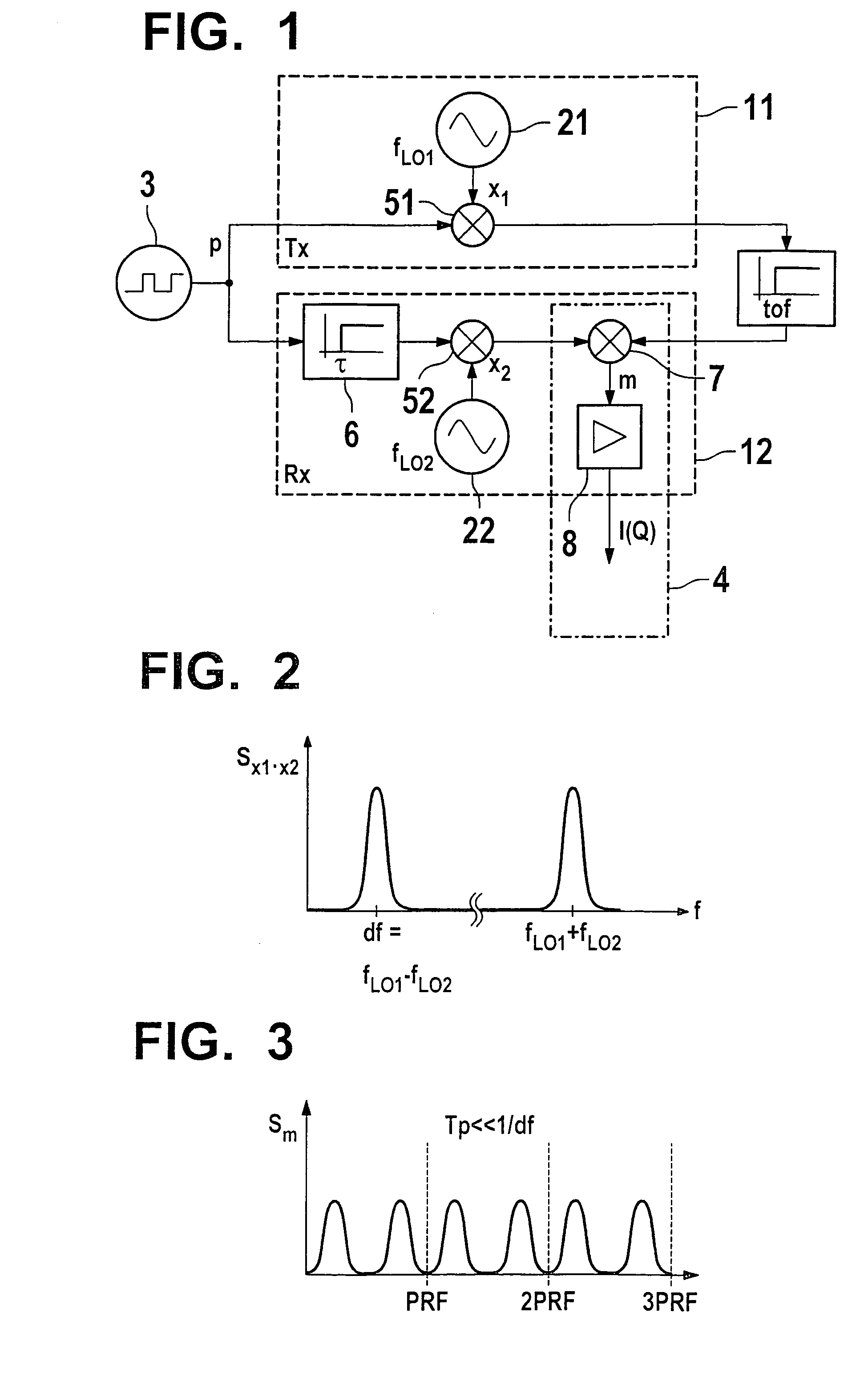Device for, in particular bistatic radar applications
a radar and bistatic technology, applied in the direction of measuring devices, instruments, using reradiation, etc., can solve the problems of inability to synchronize, no longer unique velocity determination, and only increasing energy
- Summary
- Abstract
- Description
- Claims
- Application Information
AI Technical Summary
Benefits of technology
Problems solved by technology
Method used
Image
Examples
Embodiment Construction
[0029]FIG. 1 shows two pulsed-radar sensors 11, 12, of which top sensor 11 functions as transmitter (Tx), bottom sensor 12 functions as receiver (Rx). Using their respective carrier-frequency oscillators 21, 22, the sensors generate carrier signals x1 and x2 having individual carrier frequencies fL01 and fL02. These carrier signals are modulated by the same pulsed source 3 using the 0–1 pulse sequence p, i.e., via modulators 51, 52, pulses are impressed on the output signals of the carrier-frequency oscillators. A separate pulsed signal source 3 may also be assigned to each of sensors 11, 12. However, this requires synchronizing these pulsed signal sources among one another. This may be accomplished either by using a connecting lead, or otherwise by recovering the transmitter pulse repetition frequency from the received signal and compensating for the phase offset. The phase offset may be determined by utilizing redundancy, since, due to the reversibility of signal paths (S11S12), t...
PUM
 Login to View More
Login to View More Abstract
Description
Claims
Application Information
 Login to View More
Login to View More - R&D
- Intellectual Property
- Life Sciences
- Materials
- Tech Scout
- Unparalleled Data Quality
- Higher Quality Content
- 60% Fewer Hallucinations
Browse by: Latest US Patents, China's latest patents, Technical Efficacy Thesaurus, Application Domain, Technology Topic, Popular Technical Reports.
© 2025 PatSnap. All rights reserved.Legal|Privacy policy|Modern Slavery Act Transparency Statement|Sitemap|About US| Contact US: help@patsnap.com



